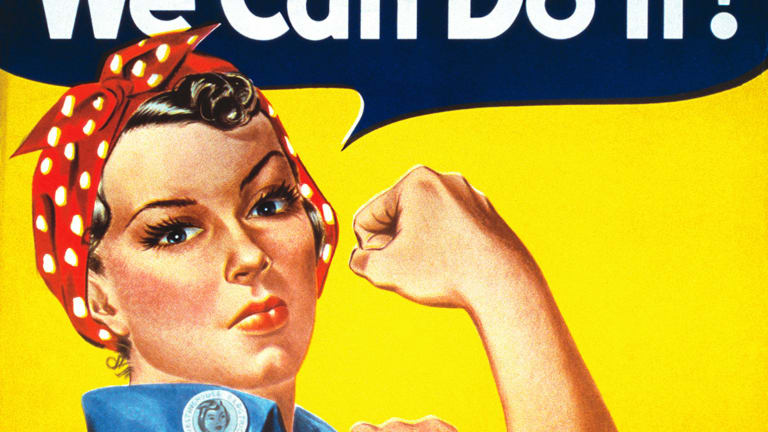March is National Women’s History Month
National Archives/Getty Images
Rosie the Riveter was created as a symbol to encourage women to join the workforce during World War II.
March 10, 2022
For centuries, women’s contributions to history were overlooked. Early history texts often excluded women altogether. Historians were almost entirely men and often viewed the past as largely shaped by male heroes and their struggles.
The birth of women’s history as an academic discipline shifted the narrative in the 20th century. A movement was sparked to ensure women had equal access to the academic institutions where their history might be taught. In the United States, the result was National Women’s History Month, an annual celebration of women’s contributions to society, history, and culture. Women’s History Month has been celebrated in the US every March since the 1980s.
Molly Murphy MacGregor was a 26-year-old California high school teacher in 1972 when a student asked her a question that would change the course of her life: “What is the Women’s Movement?”
Despite being a recent graduate of the newly founded women’s studies program at California’s Sonoma State University, she was stumped. MacGregor turned to her college history textbooks for an answer and came to a realization. Women’s narratives were left out of history books, classrooms, and the media. Women were invisible because their stories had not been told. It was oppression by omission.
Administrators at her California high school tried to pressure her to cancel a class on women’s history, arguing that there was simply not enough material to fill six weeks of instruction. Textbooks that did cover basic women’s history buried it. For instance, one text said that Congress gave women the right to vote in 1920 without mentioning the work of pioneering suffragists who fought for that civil right.
MacGregor was spurred to action. In the late 1970s, she put together a slideshow on the history of American women and traveled across the nation to present it. After learning that students rarely checked out or were assigned the tiny assortment of women’s history books available in local elementary schools, she joined the Sonoma County Commission on the Status of Women. The commission was tasked with eliminating gender discrimination and prejudice.
MacGregor and other members felt that the lack of women’s stories in educational materials constituted a violation of Title IX. In response, they proposed that the community host a women’s history week. The first-ever Women’s History Week was celebrated with a parade, a presentation, and the distribution of curriculum materials for local schools. The week intersected with International Women’s Day, a global celebration of women held annually on March 8.
The celebration garnered a landslide of interest from women across the country. A local commemoration transformed into a larger push to celebrate women’s history on a national scale. The group quickly formed into the National Women’s History Project, now known as the National Women’s History Alliance.
In 1979, MacGregor attended the Women’s History Institute for Women Leaders held at Sarah Lawrence College. She presented her idea of a National Women’s History Week, and the Women’s Institute passed a resolution calling for its establishment. Women around the country petitioned their governors to declare the week of March 8 as Women’s History Week. The grassroots movement spread.
Their first victory came in 1980 when President Jimmy Carter declared the first National Women’s History Week from March 2 to 8. His proclamation called on the American people to pause and remember the tremendous contributions of American women. The next year, Republican Senator Orrin Hatch of Utah and Democratic Representative Barbara Mikulski of Maryland co-sponsored a bipartisan bill proclaiming Women’s History Week. In 1987, the NWHP successfully lobbied Congress to declare the entire month of March as National Women’s History Month.
Leaders, pioneers, trailblazers—women were essential to the founding of this nation and are essential to the path forward into its future. In the month of March, we salute the countless women who have impacted their communities, their nation, and the world. To the women of the past and present, thank you.


